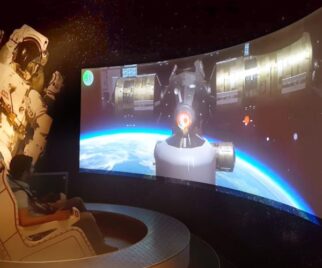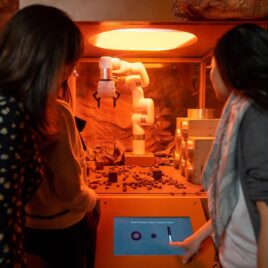Within the dynamic realm of science centers and museums, interactive physics exhibits stand as captivating gateways into the fundamental principles governing the physical world. These exhibits go beyond textbooks, allowing visitors to experience the laws of physics in action. Let’s delve into the importance of interactive physics exhibits and explore a curated list of engaging exhibits that make the invisible forces of the universe tangible.
Interactive Physics Exhibits: A Curated List
- Ball Wall
- Bernoulli Blower
- Gears
- Lift Yourself (Pulley Chair, Pulley Power, Pull up)
- Newton’s Pendulum (Newton’s Cradle)
- Pythagoras Wheel (Pythagorean Theorem)
- Slinky Treadmill
- Speed Track
- Spinning Turntable
- Magnetic Wall
- Pendulum Snake
- Bubble Race
- Ball Machine
- Catapult
- Sand Pendulum
- Catenary Arch
- Bed of Nails
- Foucault Pendulum
- Tabletop Lever
- Kugel Fountain
- Huge Lever
- Coriolis Effect
- Galileo’s Law
- Wind Tubes

The Importance of Interactive Physics Exhibits
1. Hands-On Exploration of Laws:
Interactive physics exhibits enable visitors to engage directly with the fundamental laws of physics. From understanding gravity to exploring the principles of motion, these exhibits turn theoretical concepts into tangible, hands-on experiences.

2. Visualizing Abstract Concepts:
Physics can be abstract and challenging to visualize. Interactive exhibits use concrete examples to help visitors grasp complex concepts, fostering a deeper understanding of how the physical world operates.
3. Making Physics Fun:
By turning learning into a playful experience, interactive exhibits make physics enjoyable. Visitors are more likely to retain knowledge when they associate it with engaging and memorable experiences.

4. Real-Life Application of Physics:
From exploring gears to experiencing the Coriolis effect, these exhibits demonstrate how physics influences everyday life. Visitors gain insights into the applications of physics principles in technology, engineering, and various industries.
5. Encouraging Critical Thinking:
Interactive exhibits challenge visitors to think critically and problem-solve. As they interact with the exhibits, they develop analytical skills and learn to apply physics concepts to different scenarios.
6. Demystifying Complex Phenomena:
Exhibits like the Foucault Pendulum demystify seemingly complex phenomena, making them accessible to a broad audience. Visitors witness the Earth’s rotation in action, turning an abstract idea into a tangible reality.

7. Inspiring Interest in STEM:
For students and aspiring scientists, interactive physics exhibits can spark an early interest in science, technology, engineering, and mathematics (STEM) fields. These exhibits lay the foundation for future exploration and discovery.
8. Community Education and Engagement:
Science centers and museums serve as educational hubs within communities. Interactive physics exhibits provide a valuable resource for schools, families, and individuals seeking to expand their understanding of the physical world.

In essence, interactive physics equipment transform the study of physics into an immersive and accessible experience. By blending education with entertainment, these exhibits inspire a sense of wonder and curiosity about the underlying forces that shape our universe. Science centers and museums, through their interactive physics exhibits, become catalysts for learning, encouraging visitors to explore the fascinating world of physics with enthusiasm and fascination.





